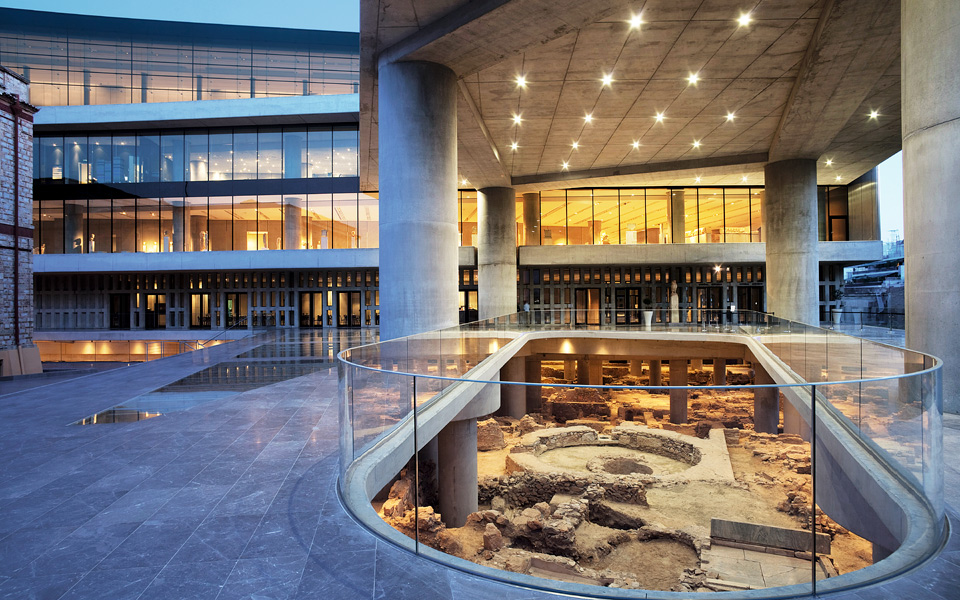The opening of the Acropolis Museum at its new premises in the summer of 2009 marked more than the inauguration of an emblematic building to house the Greek capital’s most precious antiquities. It was both a declaration to the world that Greece was ready to embrace its role as a guardian of world heritage and a powerful argument to back its long-standing claim for the Parthenon Marbles to be returned from the British Museum. In the six years since its opening, the museum has now received eight million visitors from around the world and has consolidated its ranking among the finest repositories of art in the world.
Just a stone’s throw from the Acropolis, it is a modern, architecturally simple yet imposing structure, designed by Bernard Tschumi and Michael Fotiadis to showcase its treasures and build a visual bridge that brings the ancient citadel almost within reach of the visitors inside. It is 10 times larger than its predecessor, with 14,000 square meters of exhibition space, and is both extremely visitor-friendly and innovative, making optimum use of technological advances and adopting solutions that break away from the stereotype of a traditional museum.
“ The opening of the Acropolis Museum was a declaration to the world that Greece was ready to embrace its role as a guardian of world heritage. ”
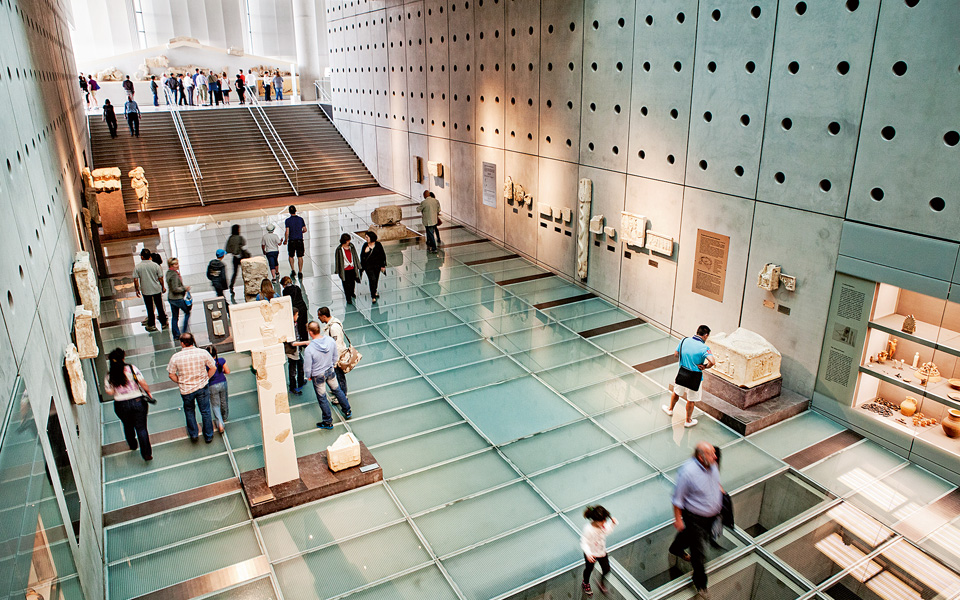
© Vangelis Zavos
“ The arrangement of the exhibits in the Acropolis museum is a departure from the usual chronological museum set-up, allowing a meandering visit through galleries with different interconnected themes. ”
In the Gallery of the Acropolis Slopes on the ground floor you can catch a glimpse of life in Ancient Athens through finds from the different historical periods of the settlement that grew on the slopes of the Sacred Rock: fragments of houses and workshops, streets and squares, wells and cemeteries, along with thousands of artifacts used in people’s daily lives.
In the Archaic Gallery on the first floor, you can experience the exhibits from all sides, just as they would have been seen by visitors ascending the Acropolis almost 26 centuries ago. The focus here is one of the most important periods in Athenian history (7th century BC – 479 BC), defined by the development of the city-state and successive changes to the political system (by Solon, Peisistratos and Cleisthenes), which eventually led to democracy.
In the stunning Parthenon Gallery on the third floor, walls of glass afford views of the temple and of Athens. The temple was designed by the architects Iktinos and Kallikrates, after Pericles in 447 BC launched an unprecedented construction program in order to build a new temple dedicated to Athena, opposite the entrance to the Acropolis sanctuary, in commemoration of the city’s victory in the Persian Wars.
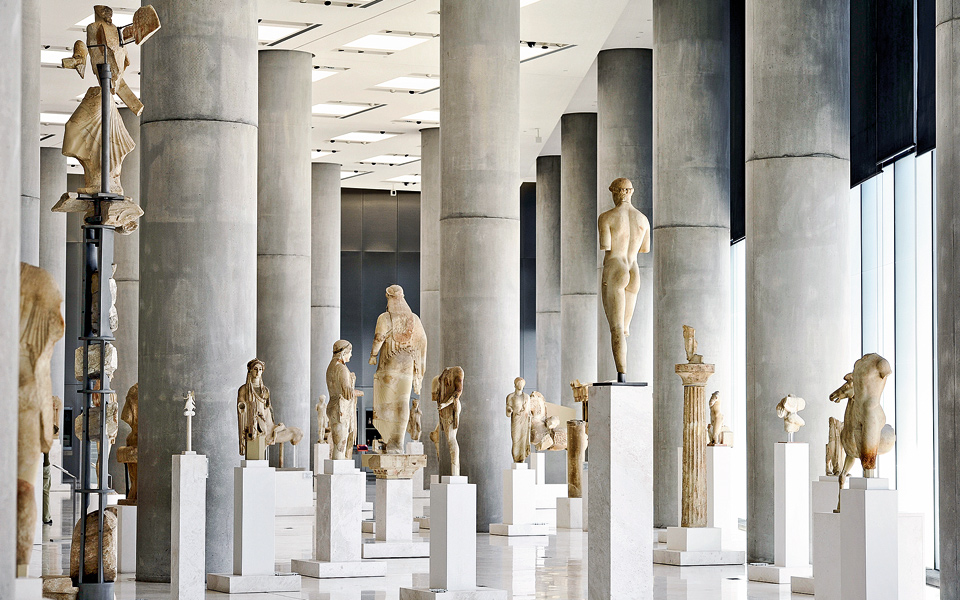
© Vangelis Zavos
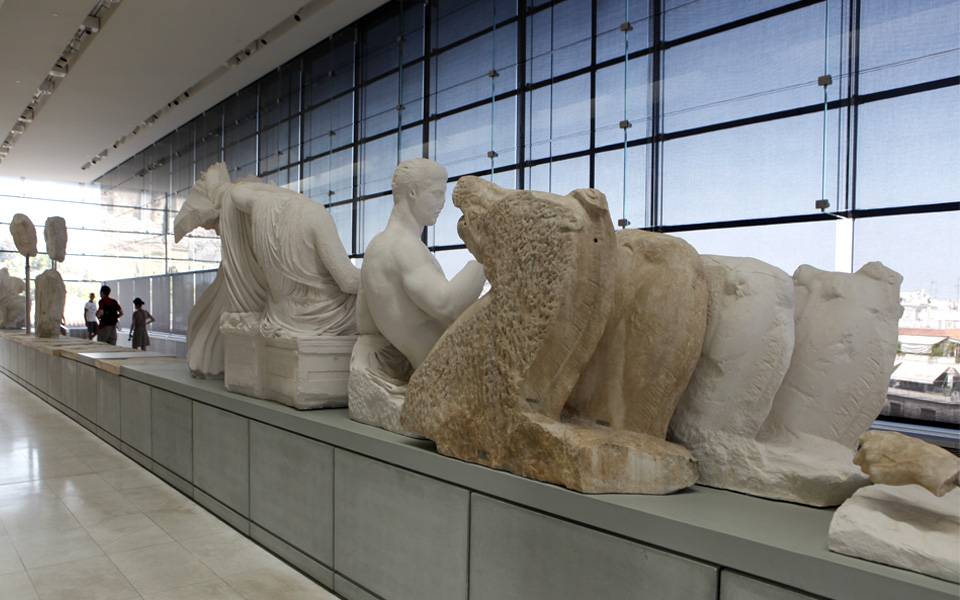
© Katerina Kampiti
The Parthenon’s sculpted frieze and metopes are arranged in sequence so they can be viewed as they once were. They are the work of Pheidias and others under his supervision, including his students Agorakritos and Alkamenes. They were carved from Pentelic marble, further embellished with metal attachments and paint, and were completed over the course of 15 years. As the subject of the frieze, many scholars believe, Pheidias chose the Procession of the Greater Panathenaia, a 12-day festival held every four years, which included special rites, sacrifices, athletic contests and musical competitions.The south frieze depicts the horsemen, chariots and sacrificial procession. On block No. 8 you will notice that there is only one rider and one horse, while all the rest have at least two. What might this mean? Some experts speak of a “climax” of the work. According to this theory, it was either Pheidias himself being depicted (in self-portrait) or Pericles.
Useful Tips
• Archaeologists and museum staff are on hand to answer visitors’ questions daily from 9 a.m. to 5 p.m. You can recognize them by their round badges, which state their official capacity
• The museum frequently organizes presentations and encourages families to learn about its exhibits through specially devised games.
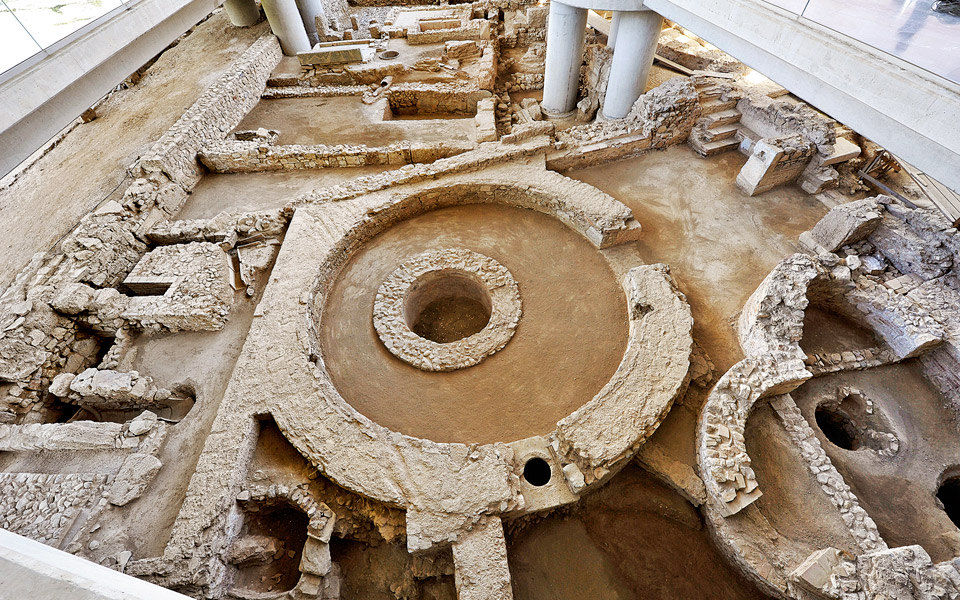
© Vangelis Zavos
Winding back down to the museum’s first floor brings you to the gallery dedicated to three important buildings: the Propylaia, a new monumental gateway to the sanctuary designed by the architect Mnesikles; the Temple of Athena Nike, completed in the 420s BC on plans by Kallikrates and dedicated to the goddess who had helped the Athenians in times of war; and lastly the Erechtheion.
The Erechtheion was a marble building of complex design and an outstanding example of the Ionic order, erected between 421 and 406 BC, at the time of the Peloponnesian War, to replace the older temple of Athena Polias. On its south side, six female figures – the famous Caryatids – were used to support the roof of the porch. Many explanations have been offered for the Caryatids. One of the most commonly held ideas is that this porch served as a monument for the tomb of Cecrops, legendary king of Athens, which lay beneath it, while the six maidens were libation bearers whose role it was to ritually honor the great ruler. Only five Caryatids are on display in the Acropolis Museum. The sixth was taken away by Lord Elgin and currently is in the British Museum.
“ Only five Caryatids are on display in the Acropolis. The sixth was taken away by Lord Elgin and currently is in the British Museum. ”

